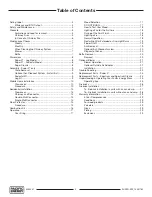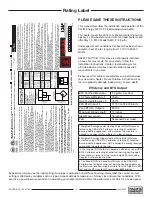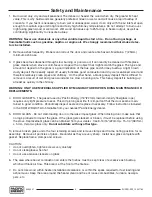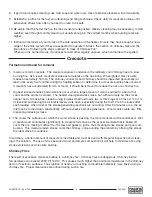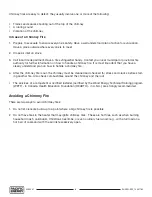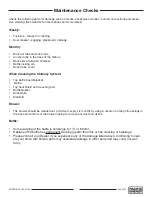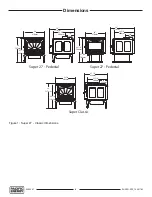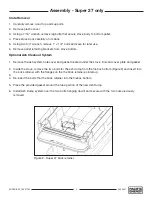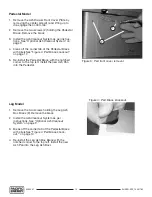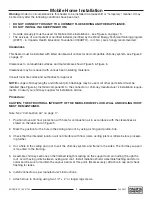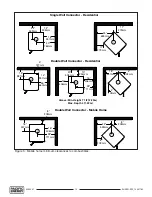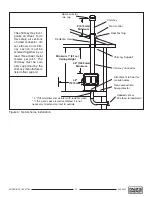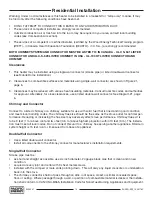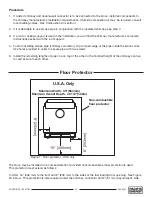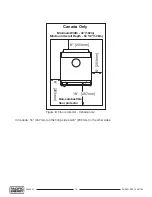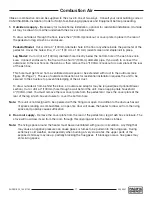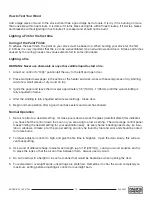
Chimney fires are easy to detect; they usually involve one or more of the following:
• Flames and sparks shooting out of the top of the chimney
• A roaring sound
• Vibration of the chimney
In Case of a Chimney Fire
1. Prepare to evacuate to ensure everyone's safety. Have a well understood plan of action for evacuation.
Have a place outside where everyone is to meet.
2. Close air inlet on stove.
3. Call local fire department. Have a fire extinguisher handy. Contact your local municipal or provincial fire
authority for further information on how to handle a chimney fire. It is most important that you have a
clearly understood plan on how to handle a chimney fire.
4. After the chimney fire is out, the chimney must be cleaned and checked for stress and cracks before start-
ing another fire. Also check combustibles around the chimney and the roof.
• The services of a competent or certified installer, (certified by the Wood Energy Technical Training program
(WETT) - in Canada, Hearth Education Foundation (HEARTH) - in U.S.A.,) are strongly recommended.
Avoiding a Chimney Fire
There are two ways to avoid chimney fires:
1. Do not let creosote build up to a point where a big chimney fire is possible.
2. Do not have fires in the heater that may ignite chimney fires. These are hot fires, such as when burning
household trash, cardboard, Christmas tree limbs, or even ordinary fuel wood; (e.g.. with a full load on a
hot bed of coals and with the air inlet excessively open.
SUPER-SD1_100517-32
6
5055.201
SUPER-SD1_100517-32


